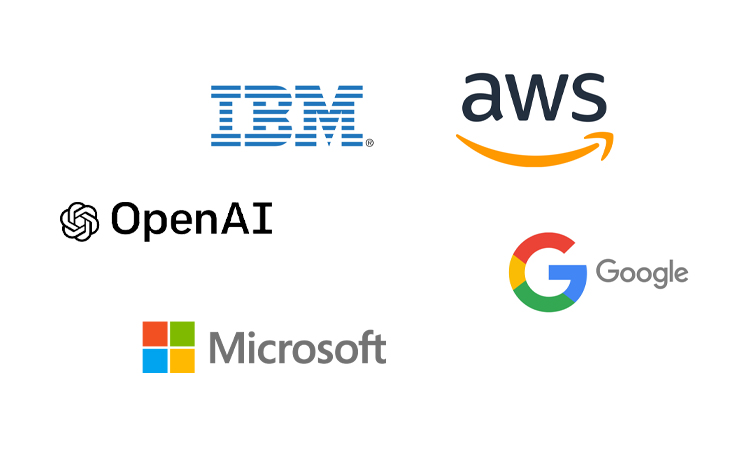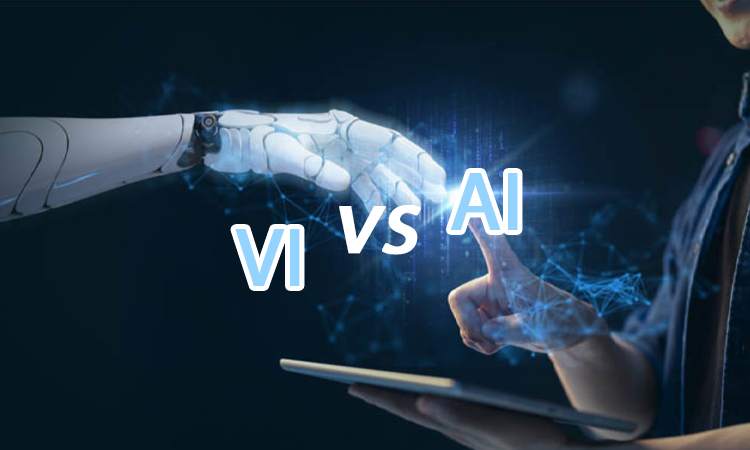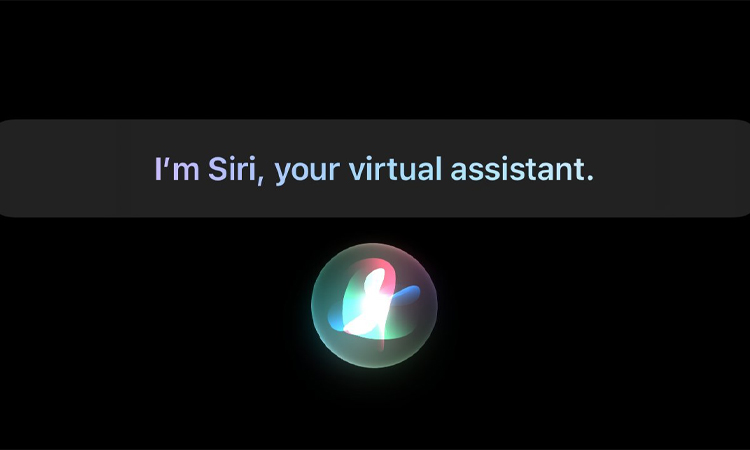The concept of virtual intelligence, or VI, is rapidly gaining attention as the next step in the development of artificial intelligence. Virtual intelligence refers to the use of advanced technologies. such as virtual reality and augmented reality, to create intelligent machines that resemble humans. These robots can interact with the physical world in a more natural and intuitive way. This breakthrough has the potential to revolutionize the way we interact with machines and could eventually lead to a new era of human-machine collaboration. In this article, we will explore the potential applications of VI and discuss its implications for the future.
Virtual Intelligence Definition

Virtual intelligence refers to the ability of a computer program or machine to exhibit intelligent behavior that is indistinguishable from that of a human. This includes understanding and responding to natural language, learning from experience, and making decisions based on complex data sets. While VI is still in its infancy, recent advancements in machine learning and natural language processing have made it possible for computers to perform tasks previously thought to be uniquely human.
How Virtual Intelligence Works?

Virtual intelligence simulates human-like thought and behavior using artificial techniques such as machine learning and natural language processing. In order to exhibit intelligent behavior, a VI system must be able to understand and interpret natural language input, learn from experience, and make decisions based on complex data sets.
In order to achieve this, VI systems use a variety of algorithms and techniques, such as neural networks and decision trees, to process and analyze data. These algorithms are trained on large data sets, which allows the VI system to learn and improve over time.
Once trained, the VI system can process natural language input and provide intelligent responses. This can include providing answers to questions, making recommendations, or taking action based on the information provided.
Overall, virtual intelligence aims to create systems that can exhibit intelligent behavior that is indistinguishable from that of a human. This requires a combination of advanced algorithms and vast amounts of data in order to simulate human-like thought and decision-making.
Virtual Intelligence Providers

Many companies and organizations provide virtual intelligence, or VI, technology and services. Some examples of VI providers include:
- OpenAI: It is a leading research institute focused on advancing artificial intelligence. They develop and provide tools and technologies for natural language processing, machine learning, and other AI applications.
- Google: It is a major provider of AI technology and services, including natural language processing and machine learning.
- IBM: It is a leading provider of AI technology and services, including its Watson platform for natural language processing and machine learning.
- Microsoft: It is a major provider of AI technology and services, including its Azure platform for machine learning and natural language processing.
- AWS: AWS, or Amazon Web Services, is a provider of cloud-based AI services, including natural language processing, machine learning, and other AI applications.
Virtual Intelligence vs Artificial Intelligence

Virtual intelligence (VI) and artificial intelligence (AI) are closely related but are not the same. VI refers to developing intelligent systems and technologies that can simulate human cognition and behavior, enabling them to understand and respond to complex tasks and situations like a human would.
On the other hand, AI refers to the development of intelligent systems and technologies that can perform tasks that typically require human intelligence, such as learning, problem-solving, and decision-making. This can include recognizing patterns, making predictions, and adapting to new situations.
One key difference between VI and AI is that VI is designed to operate in virtual environments, such as computer simulations or virtual reality (VR) environments. This allows VI systems to interact with virtual objects and environments like a human would, but without the need for physical prototypes or experimentation.
In contrast, AI systems are typically designed to operate in the real world, interacting with physical objects and environments. This means that AI systems must be able to perceive, understand, and respond to the real world to perform their tasks effectively.
Another key difference is that VI systems are designed to simulate human cognition and behavior, while AI systems are designed to perform tasks that typically require human intelligence. This means that VI systems may be able to understand and respond to complex tasks and situations in a way that is similar to how a human would. In contrast, AI systems may be able to perform tasks beyond human intelligence’s capabilities.
Overall, VI and AI are both exciting and rapidly growing fields that have the potential to transform the way we interact with technology. While they are closely related, they have some important differences and are likely to continue to evolve and develop in different ways.
Virtual Intelligence Benefits

Virtual intelligence has the potential to bring many benefits to society. Some of the potential benefits of VI include the following:
- Improved efficiency and productivity: VI can automate many tasks, allowing human workers to focus on more complex and creative tasks. This could increase efficiency and productivity in many industries, ultimately boosting economic growth.
- Enhanced decision-making: VI can analyze large amounts of data and make complex decisions based on that data. This could be particularly useful in industries such as finance and healthcare, where the ability to make accurate and timely decisions can have a significant impact.
- Improved customer service: VI can be used to improve customer service by providing personalized and efficient responses to customer inquiries. This could lead to increased customer satisfaction and loyalty.
- Increased safety: VI has the potential to improve safety in industries such as transportation and manufacturing by automating tasks that humans currently perform. This could reduce the risk of accidents and injuries.
- Better healthcare: In the healthcare industry, VI could assist doctors in making diagnostic decisions and predicting the likelihood of certain medical conditions. This could lead to improved health outcomes for patients.
Virtual Intelligence Applications

Virtual intelligence has the potential to be applied in a wide range of industries, including healthcare, finance, transportation, and customer service. Some potential applications of VI include:
- Healthcare: VI could assist doctors in making diagnostic decisions, predict the likelihood of certain medical conditions, and even assist in surgery.
- Finance: VI could be used to automate complex financial analysis and make investment decisions.
- Transportation: VI could be used to improve traffic flow and reduce the number of accidents on the road.
- Customer service: VI could be used to improve customer service by providing personalized and efficient responses to customer inquiries.
- Manufacturing: VI could automate manufacturing tasks, improving efficiency and reducing the risk of accidents.
- Education: VI could be used to personalize learning and provide tailored educational content to students.
- Security: VI could improve security by identifying potential threats and alerting authorities.
Virtual Intelligence Examples

Virtual intelligence, or VI, refers to the ability of a computer program or machine to exhibit intelligent behavior that is indistinguishable from that of a human. Some examples of VI include:
- Virtual assistants like Siri and Alexa use natural language processing to understand and respond to human speech.
- Chatbots use machine learning to simulate human conversation and respond to customer inquiries.
- Medical diagnostic systems use VI to assist doctors in making diagnostic decisions and predicting the likelihood of certain medical conditions.
- Autonomous vehicles use VI to navigate and make decisions on the road.
- Financial analysis systems use VI to automate complex financial analysis and make investment decisions.
Overall, VI has the potential to be applied in a wide range of industries and has the potential to revolutionize the way we interact with technology.
Virtual Intelligence Challenges and Limitations
Virtual intelligence, like any artificial intelligence, faces many challenges and limitations. Some of the key challenges and limitations of VI include the following:
- Limited understanding of human-like thought: While VI systems can simulate human-like behavior, they do not deeply understand human thought processes. This can make it difficult for them to make complex decisions or understand the nuances of human language and behavior.
- Ethical and societal concerns: The increasing capabilities of VI raise important ethical and societal concerns, such as job displacement and privacy. Policymakers need to address these issues and develop strategies to ensure that the benefits of VI are distributed fairly across society.
- Data privacy and security: VI systems rely on large amounts of data in order to learn and improve. This raises concerns about data privacy and security, as personal data may be collected and used without the individual’s knowledge or consent.
- Lack of transparency: It can be difficult for humans to understand how a VI system reaches its decisions, leading to a lack of trust in the system. This lack of transparency can make building trust and confidence in VI systems difficult.
- Bias and discrimination: VI systems are only as good as the data they are trained on, and if the data is biased or discriminatory, the VI system will reflect that bias. This can lead to unfair and unequal treatment of individuals based on race, gender, and socioeconomic status.
Overall, while VI has the potential to bring many benefits, it also faces many challenges and limitations that you must carefully consider.
Virtual intelligence is a rapidly evolving field that has the potential to transform the way we interact with technology. While it has many potential applications and could bring significant benefits, it raises important ethical and societal issues that you must consider carefully. The future of AI will be shaped by our ability to harness the power of VI responsibly and ethically.
More Questions About Virtual Intelligence
- Is Siri a Virtual Intelligence?
Siri is a virtual assistant that uses artificial intelligence to understand and respond to natural language queries. While Siri is not a perfect example of virtual intelligence, as it is limited in its ability to exhibit human-like thought and behavior, it does incorporate some elements of VI. For example, Siri can learn from past interactions and use that knowledge to provide more accurate responses to future queries. However, it is not yet capable of simulating human-like thought and decision-making to the same extent as true virtual intelligence.
- Is Alexa Virtual Intelligence?
Alexa is a virtual assistant that uses artificial intelligence to understand and respond to natural language queries. While Alexa incorporates some elements of virtual intelligence, such as the ability to learn from past interactions and provide personalized responses, it is not a perfect example of VI. Alexa is limited in its ability to exhibit human-like thought and behavior and cannot simulate the full range of human intelligence.
- What is a VI in Mass Effect?
In the Mass Effect video game series, a VI is an artificial intelligence used to assist the operation and maintenance of the game’s fictional space stations and ships. VIs are highly advanced AI systems capable of simulating human-like thought and behavior. They are often used to perform tasks such as managing the station’s systems, providing information to the crew, and even making decisions in emergencies.
In the game, VIs are often depicted as highly advanced and capable of performing complex tasks. However, they are also subject to certain limitations, such as the Three Laws of Robotics, which are designed to prevent them from causing harm to humans. As a result, VIs are often seen as useful but potentially dangerous tools that must be carefully controlled and monitored.
About Virtual Intelligence FAQs
-
What are the applications of Virtual Intelligence?
Virtual Intelligence has numerous applications, including customer service, healthcare, education, entertainment, and e-commerce. VI can be used to answer customer inquiries, provide personalized recommendations, assist with medical diagnoses, and improve learning outcomes, among other things.
-
How does Virtual Intelligence impact the way we work?
Virtual Intelligence can potentially transform how we work by automating routine tasks, improving decision-making, and enhancing collaboration. VI can help us work more efficiently and effectively, freeing time for more complex and creative tasks.
-
How can Virtual Intelligence improve customer experience?
Virtual Intelligence can improve customer experience by providing personalized recommendations, answering inquiries quickly and accurately, and offering 24/7 support. VI can also help businesses better understand their customers’ needs and preferences, leading to more targeted marketing efforts and improved customer loyalty.
-
What are the ethical considerations for using Virtual Intelligence?
Ethical considerations of using Virtual Intelligence include privacy, transparency, and accountability issues. As VI becomes more pervasive, it is important to ensure that it is used in a way that respects users’ rights and values.
-
How does Virtual Intelligence impact privacy and security?
Virtual Intelligence can impact privacy and security by collecting and analyzing large amounts of user data. You must ensure that this data is collected and stored securely and that users are informed about how their data is being used.
-
What are the potential risks of using Virtual Intelligence?
Potential risks of using Virtual Intelligence include the possibility of bias, error, and misuse. You need to develop ethical guidelines and best practices for using VI to minimize these risks and ensure that VI is used responsibly and beneficially.








